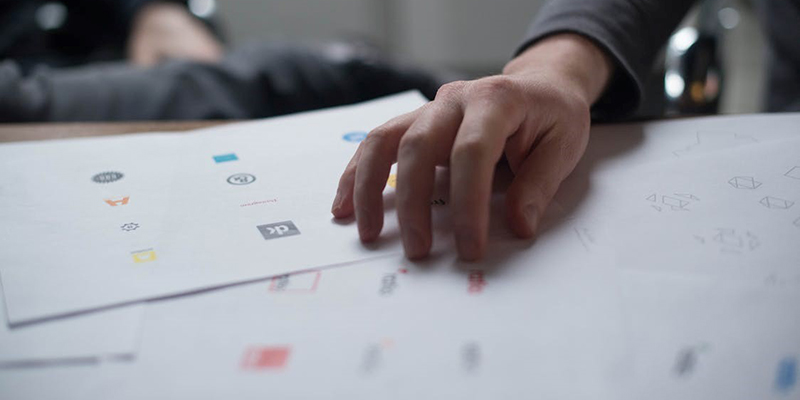How to Write a Web Design Case Study that Lands New Clients
Did you know that 48% of people consider a website’s design the number one factor when deciding the credibility of a certain business
This data provided by BlueCorona clearly shows that investing in a website’s design is important for both small and big businesses.
However, it also means that businesses pick web designers very carefully - and that’s when the challenge starts.
Sure, some designers are so impressive that they don’t need to look for new clients anymore - the clients come to them on their own. However, to most designers it’s not that easy: even if one is experienced enough, there’s still a chance they might find themselves pitching new clients someday. After all, that’s simply wise if you are a freelancer.
But how to prove your worth to the new clients? Sure, you have a portfolio for that - but sometimes the portfolio isn’t effective enough. While the potential clients might appreciate your designs, they still won’t see the whole picture clearly.
The most important thing you need to show them is how you solve other people’s problems. And the best way to do so is to publish some case studies of your work.
Why are case studies so important?
Case studies are one of the easiest and yet the most effective ways to land new clients. First, writing them doesn’t require much of your time, assuming you document all the design process.
Second, case studies serve a couple different purposes at once:
- it’s a content that is interesting to read (which also increases the chances of it getting lots of likes and shares);
- it’s a real example of designer’s work process, which would be interesting both for beginner designers and for your clients;
- it shows the others clearly what problem did you solve with the help of this design and how exactly did you solve it - the best proof that you are a professional;
- it also helps the clients understand the reasons behind your certain decisions, potentially minimizing future edits and changes;
- it’s a well-done presentation of your completed project that you can show to the client who you did this project for.
What makes a case study strong?

Sure, you can turn any of your projects into a case study - but you shouldn’t do so. It’s important to pick only the best projects to show them to the world. However, when it comes to case study writing, the definition of «best» might be a bit unclear.
For example, when you choose a project to add to your portfolio, you can choose the most well-designed ones. When it comes to a case study, this is still important - however, simply picking a beautiful design won’t be enough.
If you want to make a case study strong, choose a project that doesn’t simply looks good but will look interesting to your audience as well. Maybe the challenge you were facing during this project was particularly tough. Maybe the project itself is very interesting. Maybe the client is well-known. Think about which your projects will look impressive not only to your fellow designers but to your potential clients as well.
The second important thing to keep in mind is that you’ll need to write a strong outline for the project. And while an outline is usually written after the rest of a case study, you need to ensure that you’ll have all the data for it.
Of course, the best way to achieve this is by writing a proper brief. Even if your client gives you one, you still are free to ask them an additional question to make the requirements as specific as you can. And if you are the one, who’s going to offer a brief template to your clients, make sure that this template includes not only the basic data you might need but some additional one as well. For example, you should ask what problems the client needs to solve with the help of the design, which designs they like, and so on. If you have all this information, crafting a proper outline for your brief will be easy.
What else to remember?

Other things that make a case study strong are visual materials and explanations. There’s a couple of things about them you should keep in mind as well.
First, remember that all visual materials count. Save drafts and initial versions of the project. If you have a mood board for a certain project, be sure to include it as well. However, don’t include images of every little stage of the process, so the readers won’t get bored.
Second, be careful with descriptions. They need to explain your ideas as well as reasons behind certain decisions you make during the process. But they need to be brief at the same time. So try to include all the necessary explanations without getting into too many details.
Third, if possible, include the client’s feedback on the project and end the case study with a strong call-to-action along with the ways potential clients could contact you.
Crafting a proper case study doesn’t require much time. If you have all the data you need, it could take 10-30 minutes at most. However, you still should remember to pay attention to the details and do to your best to present your work in the best way possible.
Do you think a case study is necessary for web designers looking for new clients? Please share your thoughts and opinions in the comments below.
Related Posts
A web app development has been ruling the world for a very long time. Customers are eager to invest in web app development as Paws has made things easier for the users.
As the world of eCommerce continues to evolve, businesses are constantly seeking ways to stand out in the digital landscape. According to a report by Statista, it is predicted that global online sales will reach an impressive mark of $6.5 billion by 2023.
The rapidly changing landscape of e-commerce demands businesses to create a compelling online presence. However, establishing a formidable online store demands much more than a mere digital replica of a physical storefront. It requires a deep understanding of human psychology and a strategic...
For startups in 2024, there are few aspects as important as web development.
Recently, stock photos have become a popular choice in design.
With the digital world picking pace and setting high benchmarks for the upcoming ideas in the industry, the upcoming digital decade is likely to experience much improved and robust digital ideas.


















Comments
comments powered by Disqus